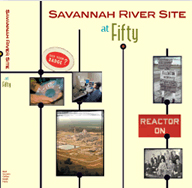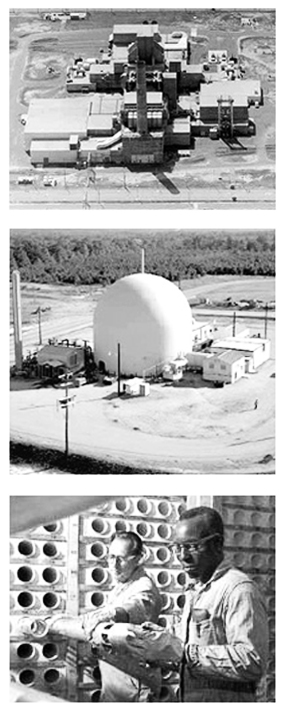New South Associates’ hard cover book, Savannah River Site at Fifty, was the recipient of the 2002 American Cultural Resource Association’s Quality  Product Award. The product of five years research and writing on the history of the Department of Energy’s Savannah River Site in South Carolina, this 720-page book was published by the Government Printing Office and is available online. The book can be purchased through the government printing office (bookstore.gpo.gov), and can be viewed at the Department of Energy, Savannah River Site http://www.srs.gov/general/about/50anniv.htm.
Product Award. The product of five years research and writing on the history of the Department of Energy’s Savannah River Site in South Carolina, this 720-page book was published by the Government Printing Office and is available online. The book can be purchased through the government printing office (bookstore.gpo.gov), and can be viewed at the Department of Energy, Savannah River Site http://www.srs.gov/general/about/50anniv.htm.
Savannah River Site at Fifty traces the history of the site from the development of the Atomic Bomb during World War II, to the resulting nuclear arms race with the Soviet Union, through the selection of the site and its construction. The book then  treats the operations of the site during the period when it was run by the Du Pont Company, looks at the Environmental Impact of the site, as well as the impact of the environmental movement on the site, and addresses the transition of site operations from Du Pont to Westinghouse Savannah River site. Extensively illustrated, the ACRA award cited the book’s design and visual appeal in addition to its scholarship and writing. Savannah River Site at Fifty was authored by Mary Beth Reed, Mark Swanson, Steve Gaither, J. W. Joseph and William R. Henry and was designed by Tracey Fedor.
treats the operations of the site during the period when it was run by the Du Pont Company, looks at the Environmental Impact of the site, as well as the impact of the environmental movement on the site, and addresses the transition of site operations from Du Pont to Westinghouse Savannah River site. Extensively illustrated, the ACRA award cited the book’s design and visual appeal in addition to its scholarship and writing. Savannah River Site at Fifty was authored by Mary Beth Reed, Mark Swanson, Steve Gaither, J. W. Joseph and William R. Henry and was designed by Tracey Fedor.
New South Associates’ work at SRS, which has been on-going for more than a decade, has been recognized by the Advisory Council on Historic Preservation as a Case Study in dealing with technological resources from the recent past. These efforts include the creation of a curatorial facility and the collection of Cold War era artifacts from site buildings scheduled for decommissioning, oral history interviews with former and current site engineers and other employees to document technological developments and the social work place of the 1950s and 1960s, and HABS/HAER building documentations. These efforts have also involved working with DOE’s safeguards and security procedures.
